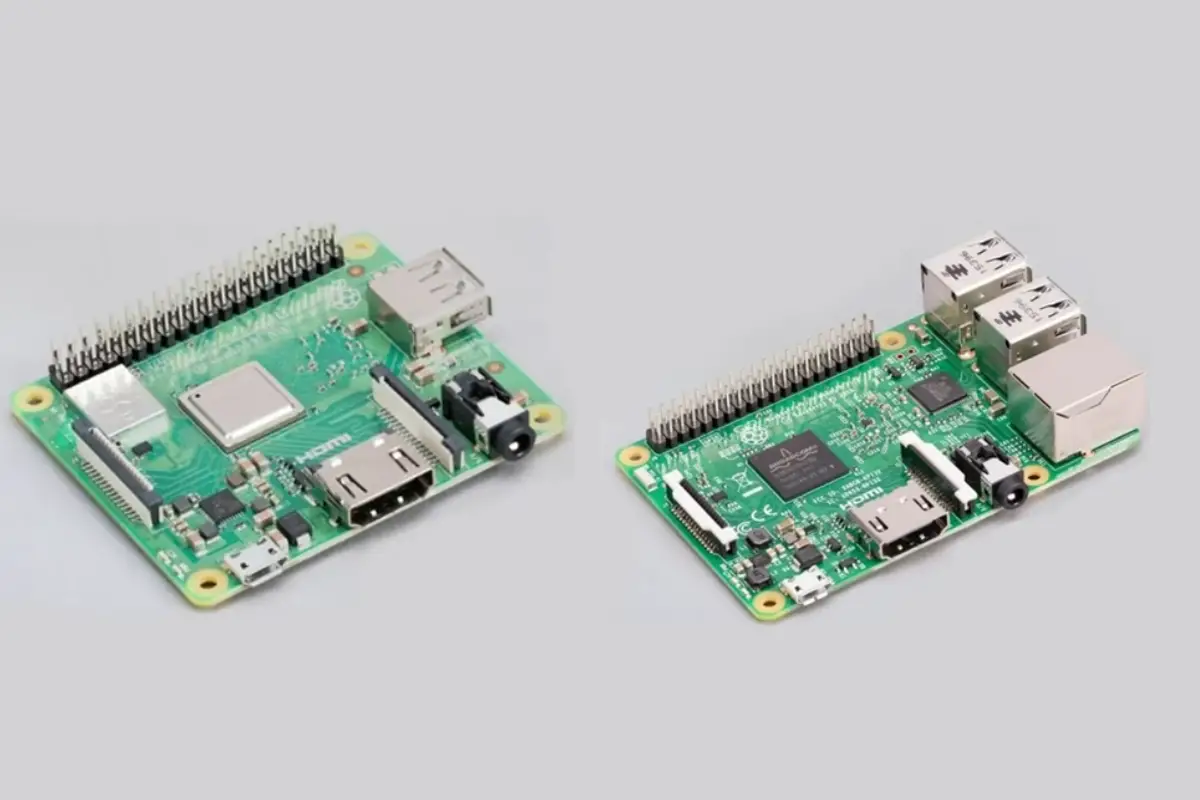We all know just how awesome Raspberry Pi computers are. These tiny computers are perfect for their compact size because they are extremely portable and easy to take with you from place to place.

However, what also makes Raspberry Pi computers so popular is that the small computer can easily be customized and edited at a whim to achieve very different results.
The single-board construction of these computers makes it easy to add components and reconfigure the layouts as you see fit.
There are numerous popular add-ons and extra components that can be hooked up directly to a Raspberry Pi’s GPIO interface, and these components need to be utilized in very different ways.
One of the most popular of these add-ons is the Sata HAT, one of many different types of HAT that can be added to the GPIO. But what actually is a SATA Hat? And how do you use one on your own Raspberry Pi?
Read on – we’ve got you covered!
What Is A Raspberry Pi HAT?
Before we take a look, specifically, at what a Sata HAT is within the context of a Raspberry Pi, it would be a good idea to make sure that we are clear on what exactly a HAT is.
The term HAT refers to ‘Hardware Attached On Top’. These are a type of extra board that can be directly hooked up to an existing Raspberry Pi motherboard to achieve different things.
They are incredibly useful because they can allow users to customize their Raspberry Pi computers in ways that make them uniquely theirs.
Raspberry Pi HATs can help users to make their Raspberry Pi computers more efficient and powerful by adding slightly more processing power.
HATs can also be used to directly connect bigger add-ons such as motors, lights, and sensors without having to juggle countless wires. This makes them great for engineers and for building all kinds of useful devices (e.g. Power Over Ethernet applications).
Adding a HAT makes it easier not only to control these extra add-ons but also to get power to them to allow them to work.
What Is A Raspberry Pi Sata HAT?
The Sata HAT is a variation on the Raspberry Pi HAT that allows users to connect it directly to the Raspberry Pi motherboard. This HAT allows users to access a complete NAS solution, and it is best intended for use with the Raspberry Pi 4.
The Raspberry Pi Sata HAT makes use of high-speed USB3 buses to allow access to a 4x HDD or 4x SSD.
Raspberry Pi Sata HATs operate at a speed of around 400 megabytes per second. It is also possible to buy even faster models that operate at around 800 megabytes per second.
Is It Worth Installing A Sata HAT Onto A Raspberry Pi?
Absolutely. Not only can a Sata HAT help to increase the overall processing power of your Raspberry Pi, but it can also be useful for helping you to connect all kinds of different extra devices through USB or through other means.
The installation is also incredibly easy thanks to the fact that Raspberry Pi 3B+ models and higher are designed to naturally integrate easily with HATs.
The price of a Sata HAT can vary quite massively. Some cost well over $100, whereas you may be able to find some retailers willing to offer them for a far lower price tag.
Installing a Sata HAT onto your Raspberry Pi board allows you to hook up all kinds of extra devices that attach via USB, so you can create a Raspberry Pi computer that allows you to control all kinds of things.
It is very worth hooking up a Sata HAT to your Raspberry Pi board because it allows you to link up devices such as HDDs and SSDs to access the content that may be stored on them. Ordinarily, these devices cannot be hooked up directly to a Raspberry Pi.
Sata Hats also allow you to hook up multiple of these awesome storage devices simultaneously without draining too much power from the Raspberry Pi. It’s incredibly convenient.
How Do You Use A Sata HAT?
Once your Sata HAT is installed, you can simply hook up your USB-powered devices directly to the Sata HAT, and this will allow you to control numerous input and output devices all from one Raspberry Pi.
It is possible to use a Sata HAT to improve the overall performance of a Raspberry Pi computer, because it allows the Raspberry Pi to draw upon the processing power offered by the Sata HAT, and power that may potentially be offered by USB devices that may be plugged directly into the HAT.
To Wrap Up
There you have it. Raspberry Pi Sata HATs are merely small extra devices that are hooked up directly to your Raspberry Pi motherboard and that allow you to access things such as HDDs and SSDs to increase your storage capabilities on the device.
A Sata HAT will also allow you to access higher processing power for your Raspberry Pi computer so that it can handle much more taxing tasks and take on challenges that may otherwise pose some significant trouble.

Frequently Asked Questions:
What Is The Lifespan Of A SATA SSD?
A SATA SSD, well cared for, can last for around 10 years or so!
Can Raspberry Pi Use SATA?
While the Raspberry Pi can not natively use SATA, it can be modified to use SATA through the use of a SATA HAT.
- How To Uninstall Packages On Ubuntu - March 13, 2024
- How To Restart Ubuntu Using The Terminal - March 13, 2024
- What Is The Steam Deck | Experience Modern Handheld Gaming - March 12, 2024








